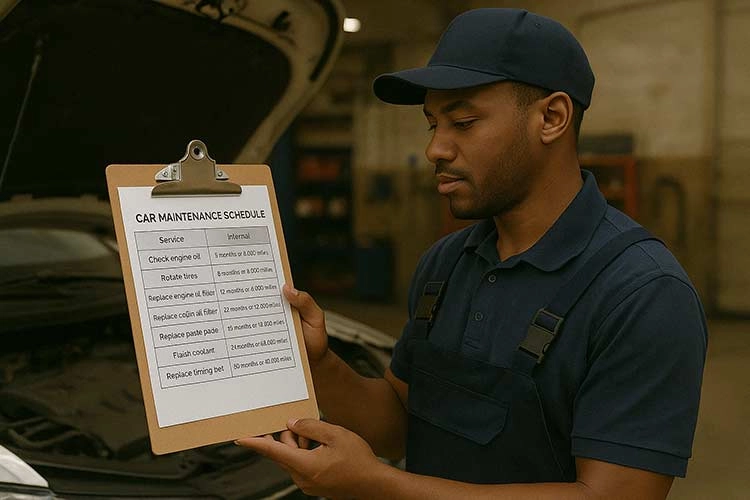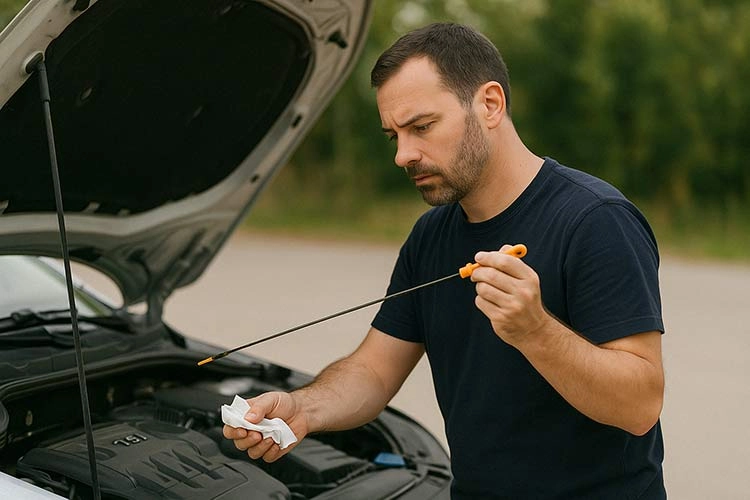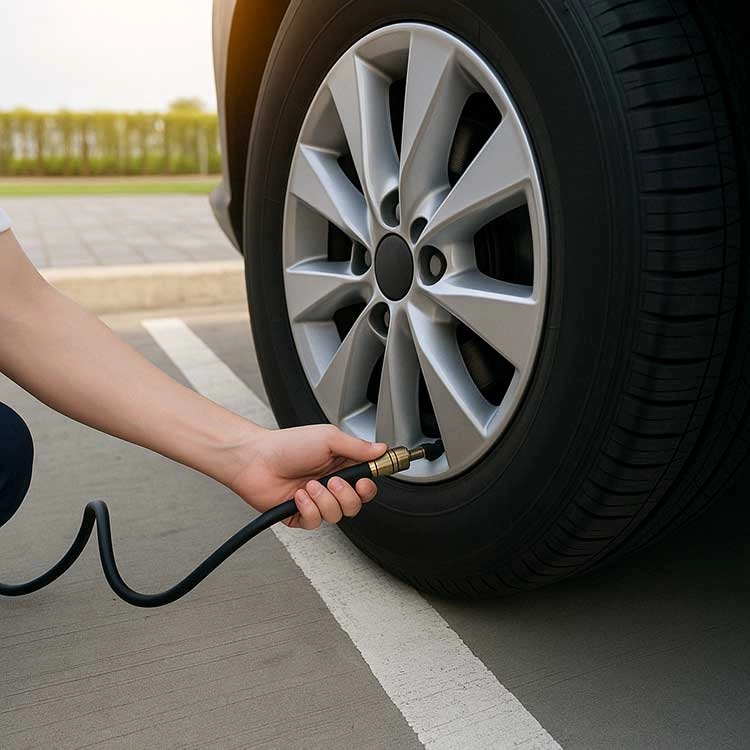
Car Maintenance Schedule – How to Maintain Your Car Properly
Essential Car Maintenance Tips and Full Car Inspection Checklist
Did you know that neglecting regular car maintenance can lead to repair bills totaling over $1,000 annually? In fact, studies show that drivers who stick to a simple maintenance routine save up to 20% on car-related expenses in the long run. Are you wondering why your car repairs keep piling up? A few simple maintenance tasks could save you hundreds—if not thousands—of dollars each year.
In this article, we’ll walk you through a complete car maintenance list designed to help you stay on top of essential tasks, so your car remains in peak condition all year round.
Whether you’re looking for a preventive maintenance checklist or wondering, ‘What maintenance does my car need?’ we’ve got you covered. By following this guide, you’ll be able to keep your vehicle safe, reliable, and efficient on the road
Car Maintenance List
In order to keep your vehicle in top condition, you should have some basic idea of car maintenance list so you can follow it and stay on top of the things. The maintenance could be splitted in two sections: advanced and basic. Where the basic could be DIY and the advanced could be done by your mechanic.
Basic Maintenance Tasks
These are core tasks that could be performed on a regular basis. They’re generally simple and can often be done without professional assistance.
Oil Change
Engine Oil change is essential! For the most part, the engine oil in your car is one of the most important and routine tasks on any car maintenance list. Fresh oil keeps the engine lubricated, reduces wear and tear, and ensures smooth operation. Frequency on how often you change your oil, 5000 to 7,500 miles (8000 to 12000 km ), though this may vary based on the vehicle model and type of oil used.
Tire Rotation
Tire rotation is done to prevent uneven wear across all tires, extending tier lifespan, and improving handling. Tire rotation involves moving front tire to back and back to front or cross, to distribute wear evenly. Frequency: Most tire manufacturers recommend 6000 to 8000 miles (10000 to 13000 km)
Fluid Checks
Always have an eye on your fluids in the vehicle, maintaining proper fluid levels is vital for vehicle performance and safety. Fluids to be checked: Engine Oil, coolant, brake fluids, transmission fluid, hydraulic pump fluid, and windshield washer fluid. Frequency: Check fluids monthly. Many fluids, like brake and transmission fluid, typically need replacing every 30,000 to 60,000 miles.
Filters
There are around 8 filters in your vehicle, some of them probably you will never hear about, and you never need to replace them. Here are the main ones that should be maintained regularly.
- Oil Filter - replaced with every engine oil change
- Air Filter - Usually it is said to be replaced 15k 30k miles, rule of thumb, change it while oil service intervals. It is not expensive to maintain.
- Fuel Filter - Again change it on oil service intervals.
These basic tasks are relatively inexpensive but crucial to the health of the vehicle. By sticking to this part of the car maintenance list, drivers can prevent small issues from turning into major repairs.
Advanced Maintenance Tasks
Advanced maintenance tasks go beyond routine upkeep and typically involve more complex components. They are usually performed less frequently but require professional inspection or repair.
Timing Belt/Chain Replacement
Timing components in the engine are some of the most important components for the engine, they keep the engine in sync with valves and pistons to have the perfect explosion. If they snap, the engine is ruined. Frequency: Replace approximately every 60,000 to 100,000 miles (100,000 to 160,000 km), depending on the car model. Always consult the owner’s manual for specific recommendations.
Brake Inspection and Replacement
The brake system should be inspected regularly to ensure it’s functioning properly. This includes checking brake pads, rotors, and fluid levels. Worn brake pads can compromise stopping power, posing a serious safety risk. Frequency: Inspect brakes every 10,000 to 15,000 miles(16,000 to 25,000 km). Brake pads typically need replacement every 20,000 to 50,000 miles, depending on driving habits and conditions.
Battery Maintenance and Replacement
A car battery should be checked to ensure it’s holding a charge and free from corrosion. A weak or failing battery can leave you stranded. Frequency: Inspect the battery at least twice a year. Most batteries last 3 to 5 years before needing replacement.
Transmission Fluid Replacement
Transmission fluid lubricates the transmission system and helps it shift gears smoothly. Low or dirty transmission fluid can lead to transmission failure. Frequency: Typically, transmission fluid needs replacement every 30,000 to 60,000 miles. Consult the owner’s manual for specific intervals.
Spark Plug Replacement
Spark plugs are responsible for igniting the air-fuel mixture in the engine, so worn-out plugs can lead to poor performance and decreased fuel efficiency. Frequency: Replace every 30,000 to 100,000 miles, depending on the type of spark plug and the vehicle model.
Car Maintenance Schedule
The Maintenance Schedule provides a detailed, clear guideline for vehicle owners to follow, ensuring consistent and reliable car care.
| Task | Frequency (Miles) | Frequency (Kilometers) |
|---|---|---|
| Oil Change | Every 5,000 - 7,500 miles | Every 8,000 - 12,000 km |
| Tire Rotation | Every 6,000 - 8,000 miles | Every 9,500 - 13,000 km |
| Fluid Checks | Monthly | Monthly |
| Air Filter Replacement | Every Oil Change | Every Oil Change |
| Timing Belt Replacement | Every 60,000 - 100,000 miles | Every 96,000 - 160,000 km |
| Brake Inspection | Every 10,000 - 15,000 miles | Every 16,000 - 24,000 km |
| Battery Check | Twice a year | Twice a year |
| Transmission Fluid Change | Every 30,000 - 60,000 miles | Every 48,000 - 96,000 km |
| Spark Plug Replacement | Every 30,000 - 100,000 miles | Every 48,000 - 160,000 km |
| Cabin Air Filter Replacement | Every 15,000 - 30,000 miles | Every 24,000 - 48,000 km |
| Coolant Flush | Every 30,000 - 50,000 miles | Every 48,000 - 80,000 km |
| Brake Fluid Replacement | Every 20,000 - 45,000 miles | Every 32,000 - 72,000 km |
| Wheel Alignment | Every 10,000 - 15,000 miles | Every 16,000 - 24,000 km |
| Power Steering Fluid Replacement | Every 50,000 miles | Every 80,000 km |
| Fuel Filter Replacement | Every Oil Change | Every Oil Change |
Maintenance Schedule
Full Car Inspection Checklist
A full inspection of your vehicle will ensure that all the key components are functioning properly. The checklist is designed to help you systematically check exterior to the interior and under-the-hood elements. Regular inspections not only improve safety but also help identify issues early on, preventing more costly repairs. Following a full car inspection checklist ensures you’re aware of your vehicle’s overall condition and can catch potential issues before they escalate.
| Checklist Area | Task | Frequency |
|---|---|---|
| Exterior and Tires | Tire Condition and Pressure | Monthly; rotate every 6,000 - 8,000 miles (9,500 - 13,000 km) |
| Lights (Headlights, Brake Lights, Turn Signals) | Monthly | |
| Windshield Wipers and Washer Fluid | Check wipers every 6 months; refill washer fluid monthly | |
| Body and Glass | Monthly or after significant weather events | |
| Tire Tread Depth | Check every 6 months; replace tires when tread is below 2/32 inches (1.6 mm) | |
| Alignment and Suspension | Every 10,000 - 15,000 miles (16,000 - 24,000 km) or if the vehicle pulls to one side | |
| Under the Hood | Engine Oil Level and Quality | Monthly |
| Coolant Level and Condition | Monthly; flush every 30,000 - 50,000 miles (48,000 - 80,000 km) | |
| Transmission Fluid Level and Quality | Every 30,000 - 60,000 miles (48,000 - 96,000 km) | |
| Brake Fluid Level and Condition | Every 6 months; replace every 20,000 - 45,000 miles (32,000 - 72,000 km) | |
| Battery Health and Terminals | Twice a year; clean terminals if corrosion is present | |
| Belts and Hoses | Inspect every 6 months for wear or cracking; replace as needed | |
| Power Steering Fluid | Check every 6 months; replace every 50,000 miles (80,000 km) | |
| Engine Air Filter | Inspect every 12,000 - 15,000 miles (19,000 - 24,000 km) | |
| Interior Checks | Dashboard Warning Lights | Every start-up; address any warnings immediately |
| HVAC System (Heating, Cooling, Ventilation) | Seasonally; inspect for strange smells or noises | |
| Cabin Air Filter | Replace every 15,000 - 30,000 miles (24,000 - 48,000 km) | |
| Seat Belts and Safety Equipment | Annually; check for fraying and proper functioning | |
| Horn and Mirrors | Monthly; test horn and ensure mirrors are properly adjusted | |
| Pedals (Brake, Clutch, Accelerator) | Monthly; ensure smooth and responsive movement | |
| Brakes and Suspension | Brake Pads and Rotors | Inspect every 10,000 - 15,000 miles (16,000 - 24,000 km); replace pads every 20,000 - 50,000 miles (32,000 - 80,000 km) |
| Shock Absorbers and Struts | Check every 50,000 miles (80,000 km); replace if leaking or if the ride is bumpy | |
| Wheel Bearings | Inspect every 30,000 miles (48,000 km) for noise or play | |
| Exhaust System | Exhaust Pipe and Muffler | Inspect every 12 months; check for rust, leaks, or unusual noises |
| Emissions and Oxygen Sensors | Check every 30,000 - 50,000 miles (48,000 - 80,000 km) or if the “Check Engine” light is on | |
| Fluids and Filters | Fuel Filter | Replace every 20,000 - 40,000 miles (32,000 - 64,000 km) |
| Differential Fluid | Change every 30,000 - 60,000 miles (48,000 - 96,000 km) | |
| Windshield Washer Fluid | Monthly, especially before long trips or during winter | |
| Additional Checks | Door Locks and Window Controls | Monthly; test for smooth operation |
| Exterior and Interior Lights | Monthly; replace any burnt-out bulbs | |
| Emergency Kit | Annually; check for essentials like a spare tire, jack, jumper cables, flashlight, and first aid kit |
Full Car Inspection Checklist
By following the checklist regularly, you would be able to ensure you are covering all aspects of your vehicle safety, performance, and reliability.
FAQ
How do you maintain a car properly?
To maintain a car properly, follow a routine car maintenance checklist that includes tasks such as regular oil changes, tire rotations, and fluid checks. Additionally, it’s important to schedule full inspections periodically to catch any potential issues early on. Checking the brakes, battery, and essential fluids every few months helps ensure the car operates safely and efficiently. Keeping up with these basic tasks can improve performance, extend the vehicle’s lifespan, and minimize the risk of unexpected breakdowns.
How often should I follow a full car inspection checklist?
A full car inspection is recommended at least once a year for most vehicles, though it may be needed more frequently depending on the vehicle’s age, mileage, and driving conditions. For newer cars or those driven primarily on highways, an annual inspection is generally sufficient. However, for older vehicles or those subjected to extreme weather or rough driving conditions, a full inspection every 6 months is advisable. Regular inspections help identify potential problems before they escalate into costly repairs.
What maintenance does my car need if it’s a new vehicle?
For a new vehicle, it’s essential to follow the manufacturer’s recommended maintenance schedule found in the owner’s manual. Typically, this includes oil and filter changes, tire rotations, and fluid level checks. New cars may not need as much maintenance initially, but following the recommended intervals is important to ensure warranty coverage and protect the vehicle’s performance. Regular maintenance for a new car usually starts with simple checks every few thousand miles, progressing to more involved services as the car accumulates mileage.
Why is annual car maintenance essential?
Annual car maintenance is essential because it helps keep the vehicle safe, efficient, and reliable. Regular maintenance tasks, like oil changes and brake checks, prevent small issues from turning into major problems. Furthermore, an annual inspection can improve fuel efficiency, reduce emissions, and increase the car's resale value by maintaining its condition over time. Annual maintenance also helps you comply with any manufacturer requirements to keep your warranty intact and provides peace of mind knowing your vehicle is road-ready.
What is the difference between a car maintenance schedule and a preventive maintenance checklist?
A car maintenance schedule outlines when specific maintenance tasks should be performed based on time or mileage intervals. This schedule is generally provided by the vehicle manufacturer and includes routine services, like oil changes, tire rotations, and inspections. A preventive maintenance checklist, on the other hand, focuses on tasks that are aimed at preventing potential issues from arising. It includes proactive measures, like checking fluid levels, inspecting belts and hoses, and monitoring battery health. While a maintenance schedule is about following a structured plan, a preventive maintenance checklist is about taking extra steps to keep the car in peak condition and avoid costly repairs.

